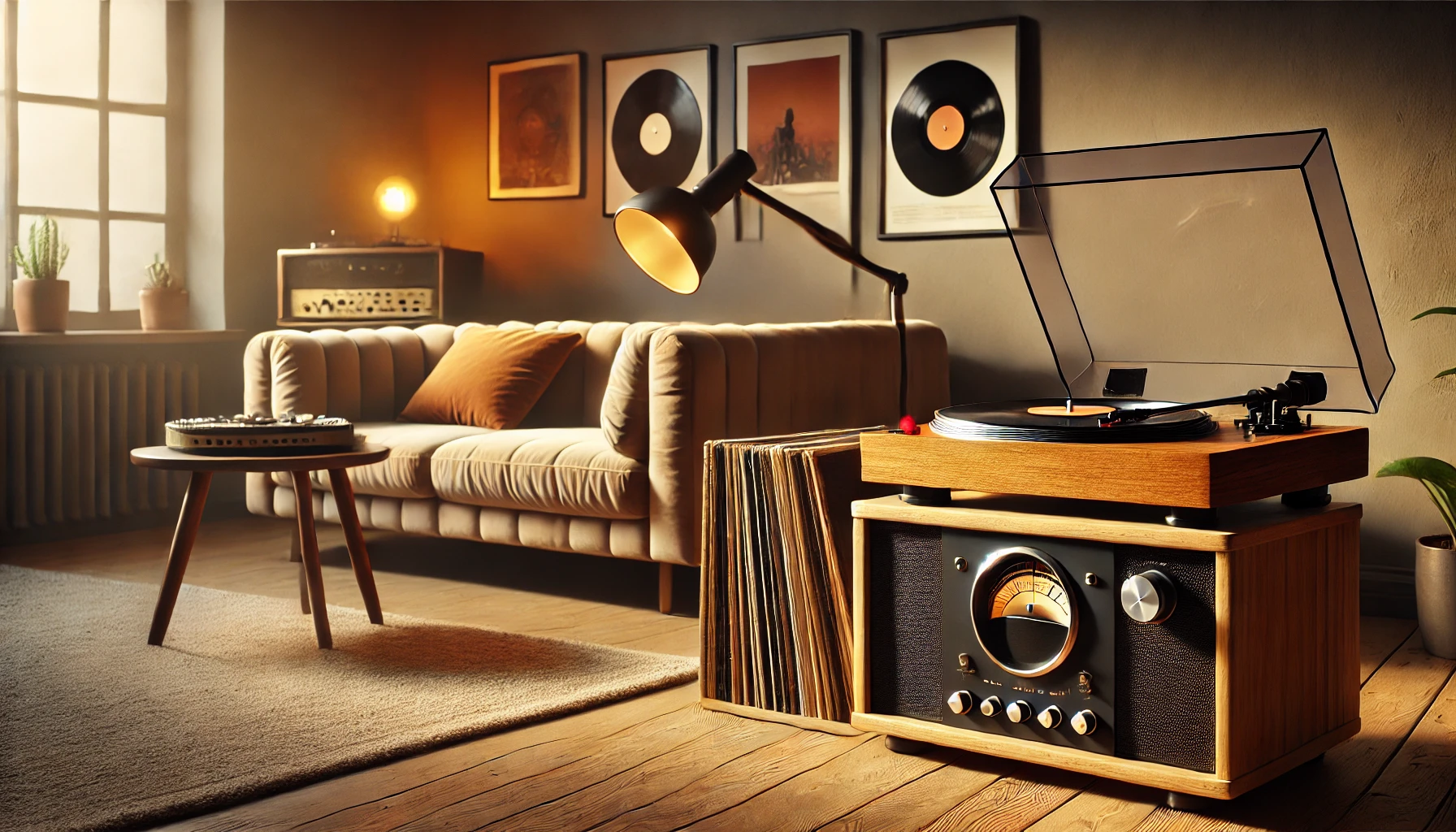Hey there, vinyl enthusiasts and curious music lovers!
Today, we’re diving into the world of turntables, specifically the age-old debate of manual vs automatic turntables.
As someone who’s been spinning records for over two decades, I’ve had my fair share of experiences with both types.
So, let’s drop the needle on this topic and explore the key differences between these two turntable types!
Manual Vs Automatic Turntables: What Are the Differences?
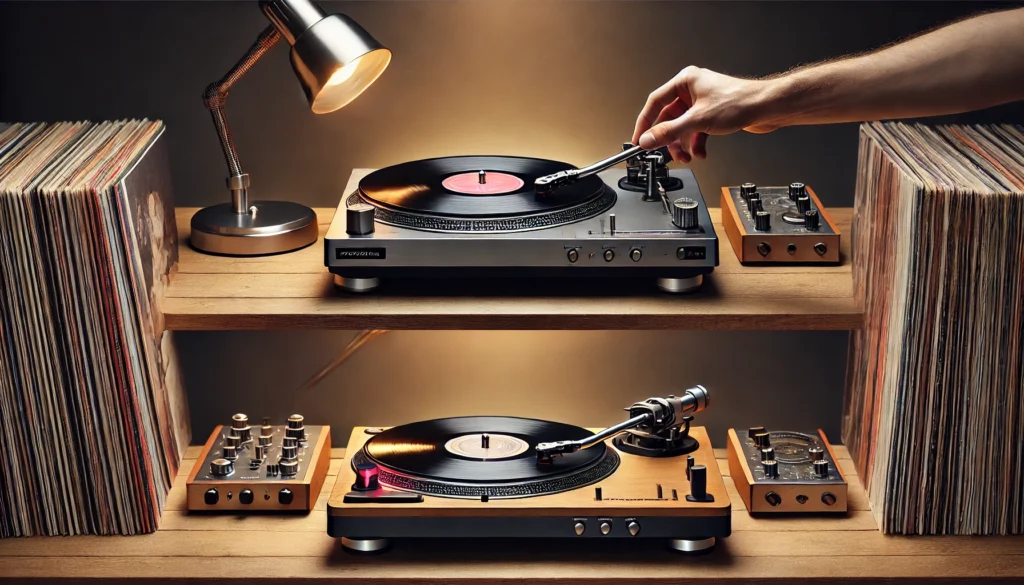
Alright, let’s cut to the chase! The main difference between manual and automatic turntables is in how you start and stop playing a record.
With a manual turntable, you’re the DJ – you’ve gotta physically place the tonearm on the record to start it and lift it off when the side’s done.
Automatic turntables, on the other hand, do the heavy lifting for you. They’ll move the tonearm into place and return it when the record’s over.
It’s like having a little robot assistant for your vinyl! There’s a lot more to unpack here, so stick around as we dive deeper into the nitty-gritty of these two turntable types.
What Are Manual Turntables?
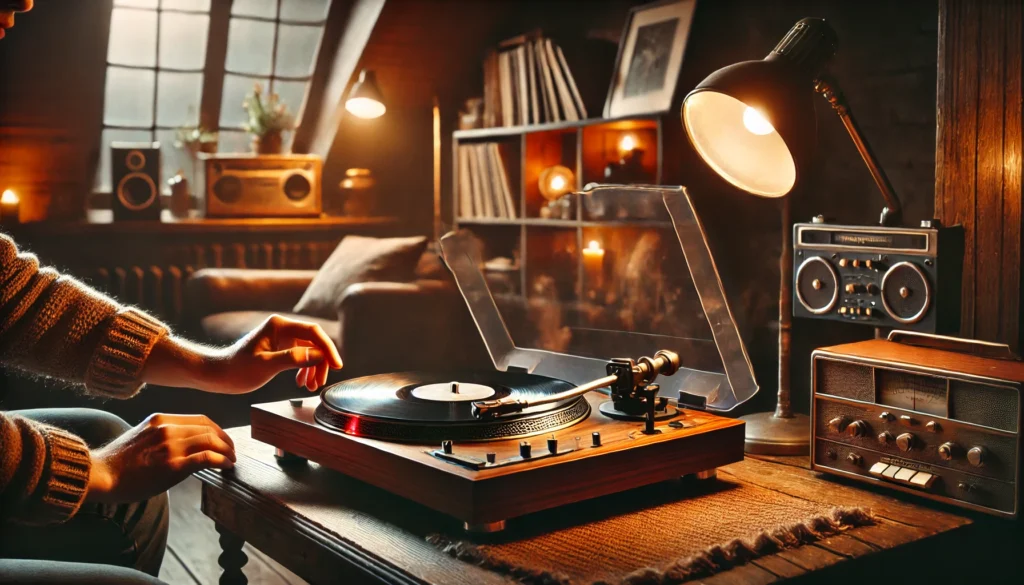
Man, where do I even start with manual turntables? These babies are the purist’s dream! A manual turntable is exactly what it sounds like – you’re in control of every aspect of playing your records.
You gotta manually place the tonearm on the record to start playing and lift it off when the music’s done. It’s like being the conductor of your own little vinyl orchestra!
I remember when I got my first manual turntable. I was so nervous about dropping the needle, I practically held my breath every time!
But let me tell you, there’s something really special about that hands-on interaction with your music. It’s like you’re part of the playback process, you know?
Now, the cool thing about manual turntables is that they usually have fewer moving parts. This can mean better sound quality because there’s less chance for mechanical noise to interfere with your tunes.
Plus, you’ve got more control over where exactly you start playing on a record. Wanna skip straight to that killer guitar solo? No problem!
But I gotta be real with you – manual turntables aren’t for everyone. If you’re the type who likes to put on a record and forget about it, you might find yourself with a scratched-up vinyl when you forget to lift the tonearm at the end.
Trust me, I’ve made that mistake more times than I’d like to admit!
And let’s not forget about the learning curve. It took me a while to get comfortable with properly cueing up a record without making that cringeworthy scratch sound.
But hey, practice makes perfect, right?
Overall, manual turntables are great for folks who really want to be involved in the listening experience. They’re often favored by audiophiles and vinyl enthusiasts who appreciate that extra bit of control and potentially better sound quality.
Just be prepared to give your records a bit more attention!
What Are Automatic Turntables?
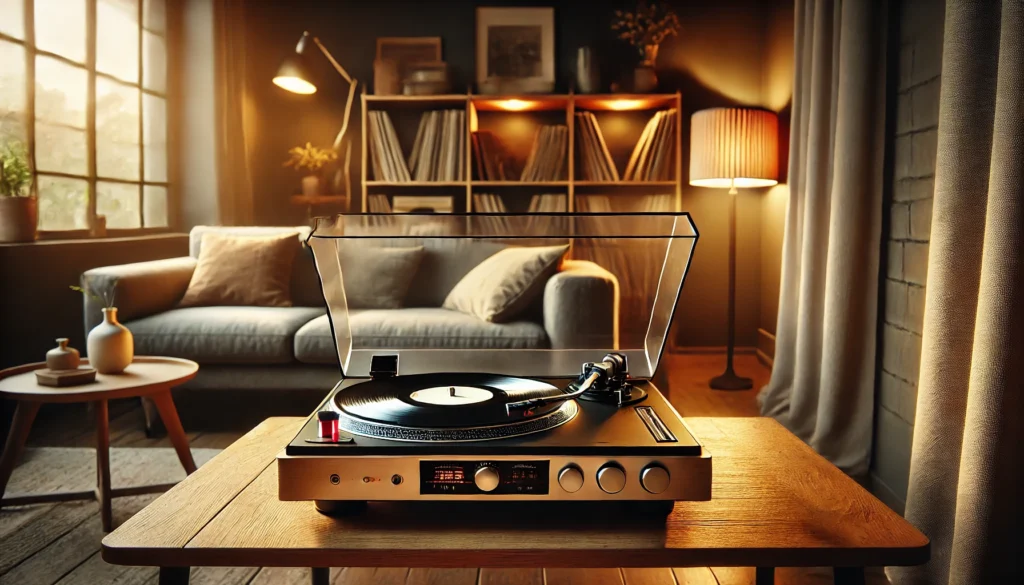
Okay, now let’s talk about automatic turntables – the “set it and forget it” option of the vinyl world! These nifty devices take some of the manual labor out of playing records.
With an automatic turntable, you just hit a button, and voila! The tonearm moves into place, gently lowers onto the record, and when the side’s done, it lifts off and returns to its resting position.
It’s like magic!
I gotta admit, when I first tried an automatic turntable, it felt a bit like cheating. I mean, where’s the ritual, right?
But man, once I got used to it, I realized how convenient these things can be. You know those lazy Sunday afternoons when you just want to relax with some tunes? Automatic turntables are perfect for that!
Now, there are actually two types of automatic turntables: fully automatic and semi-automatic. Fully automatic ones do everything for you – start, stop, and return the tonearm.
Semi-automatic turntables usually require you to start playback manually, but they’ll lift the tonearm at the end of the record. It’s like a halfway house between manual and fully automatic!
One thing I love about automatic turntables is how beginner-friendly they are. I remember when my niece wanted to play some of my records.
I was so nervous she’d scratch them! But with the automatic turntable, she could enjoy the vinyl experience without me hovering over her shoulder like a crazy uncle.
But it’s not all roses with automatic turntables. All those extra mechanisms can potentially introduce more noise into the system.
And if something goes wrong with the automatic function, it can be a pain to fix. I once had an automatic turntable that decided it wanted to return the tonearm halfway through every record. Talk about a mood killer!
Price-wise, automatic turntables can be a mixed bag. Entry-level automatic models are often cheaper than their manual counterparts, but high-end automatic turntables can get pretty pricey.
In the end, automatic turntables are great for folks who want the vinyl experience without all the fuss. They’re perfect for background music or for when you’re multitasking.
Just don’t expect to impress your audiophile friends with your DJ skills!
Sound Quality Comparison
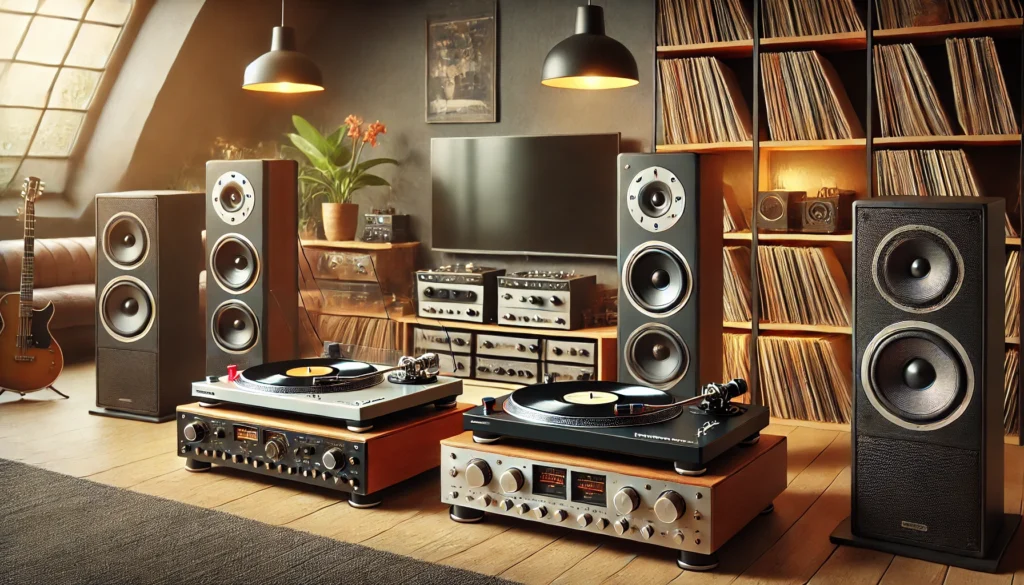
Alright, let’s get into the nitty-gritty – sound quality. This is where things can get a bit… contentious.
I’ve seen heated debates break out over this topic at audio shows, I kid you not!
First things first, let’s bust a myth: there’s no inherent reason why a manual turntable should sound better than an automatic one, or vice versa. The overall sound quality depends on a whole bunch of factors – the quality of the components, the design of the turntable, how well it’s set up, and even the condition of your records.
That being said, many audiophiles swear by manual turntables for sound quality. The argument goes that because manual turntables have fewer moving parts, there’s less potential for mechanical noise to interfere with the sound.
And you know what? There’s some truth to that. I’ve definitely heard some automatic turntables where you could hear the mechanism whirring away in quiet passages.
But here’s the thing – a well-designed automatic turntable can sound just as good as a manual one. I remember the first time I heard a high-end automatic turntable at a hi-fi show.
I was blown away! The sound was crystal clear, with no mechanical noise whatsoever. It really opened my eyes (or should I say ears?) to what was possible with automatic turntables.
One advantage that manual turntables often have is in the tonearm department. Because they don’t need to accommodate an automatic mechanism, manual tonearms can sometimes be designed with more focus on optimizing things like tracking force and anti-skate.
This can lead to better tracking of the record groove, which means better sound.
But let’s be real – unless you’re really into the minutiae of audio quality, chances are you might not even notice these differences. I’ve done blind tests with friends using similarly priced manual and automatic turntables, and most of the time, people couldn’t consistently tell which was which.
In my experience, factors like the quality of your cartridge, the condition of your records, and even the acoustics of your listening room often make a bigger difference to sound quality than whether your turntable is manual or automatic.
So, what’s the bottom line? If you’re chasing the absolute pinnacle of sound quality and are willing to put in the effort, a high-end manual turntable might give you a slight edge.
But for most of us, a well-designed turntable of either type can provide fantastic sound quality. The most important thing is to choose a turntable that you enjoy using and that fits your listening habits.
After all, the best-sounding turntable is the one that gets you listening to your records more often!
User Experience and Convenience
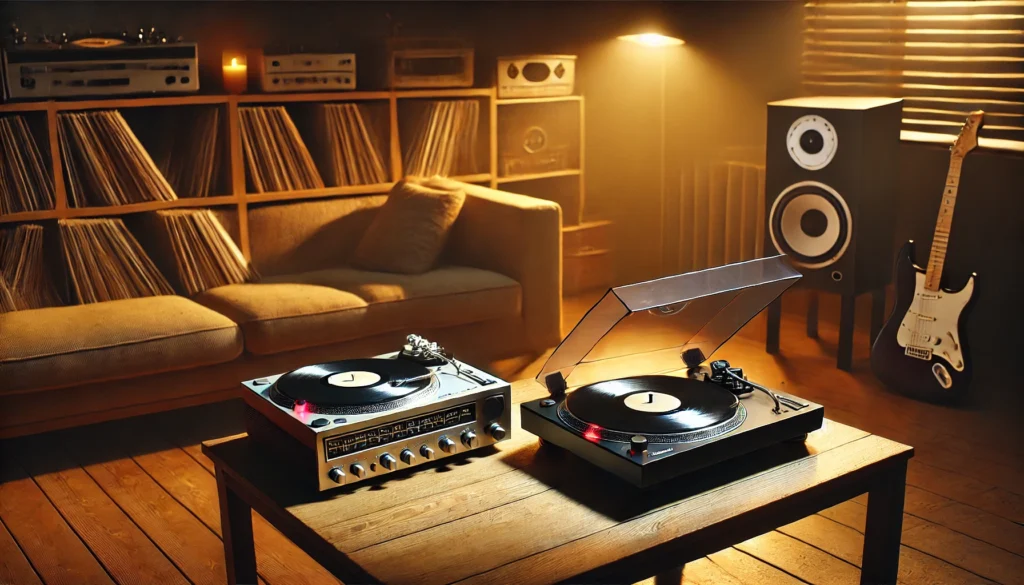
Let’s chat about the user experience and convenience factor of manual versus automatic turntables. This is where the rubber really meets the road for most folks!
Manual turntables, as I mentioned earlier, require a bit more hands-on interaction. You’ve gotta be there to start and stop the record, which means you’re more engaged in the listening process.
For some people (like yours truly), this is part of the charm of vinyl. There’s something almost meditative about the ritual of selecting a record, carefully removing it from its sleeve, placing it on the platter, and gently lowering the tonearm.
But I’ll be the first to admit – it’s not always convenient. I can’t tell you how many times I’ve fallen asleep listening to records and woken up to the dreaded ‘tick-tick-tick’ of the needle at the end of the side.
Oops!
Automatic turntables, on the other hand, are all about convenience. You can set a record playing and go about your business without worrying about having to come back and lift the tonearm.
This is great for background music or when you’re doing other things while listening. I love using my automatic turntable when I’m cooking – I can start an album and know it’ll take care of itself while I’m chopping veggies.
When it comes to maintenance, manual turntables generally have the edge. With fewer moving parts, there’s less that can go wrong.
I’ve had my main manual turntable for over 15 years now, and aside from replacing the belt and cartridge, it’s never needed any work.
Automatic turntables, with their additional mechanisms, can sometimes be more prone to issues. I had a friend who bought a budget automatic turntable, and within a year, the auto-return function started acting up.
It wasn’t the end of the world, but it was annoying.
That said, modern automatic turntables, especially higher-end ones, are pretty reliable. And for some folks, the convenience factor outweighs the potential for additional maintenance down the line.
As for ease of use, automatic turntables definitely have the upper hand, especially for beginners. There’s less of a learning curve, and less chance of accidentally damaging your records.
I always recommend automatic turntables for friends who are just getting into vinyl.
Manual turntables, while not difficult to use, do require a bit more care and attention. You need to learn how to properly cue up a record, and how to lift the tonearm without scratching the vinyl.
It’s not rocket science, but it does take some practice.
In the end, the choice between manual and automatic often comes down to personal preference and listening habits. Do you see yourself as someone who wants to be actively involved in playing your records?
Or do you prefer to just press a button and let the music play? There’s no right or wrong answer – it’s all about what works best for you and your lifestyle.
Price Range and Value for Money
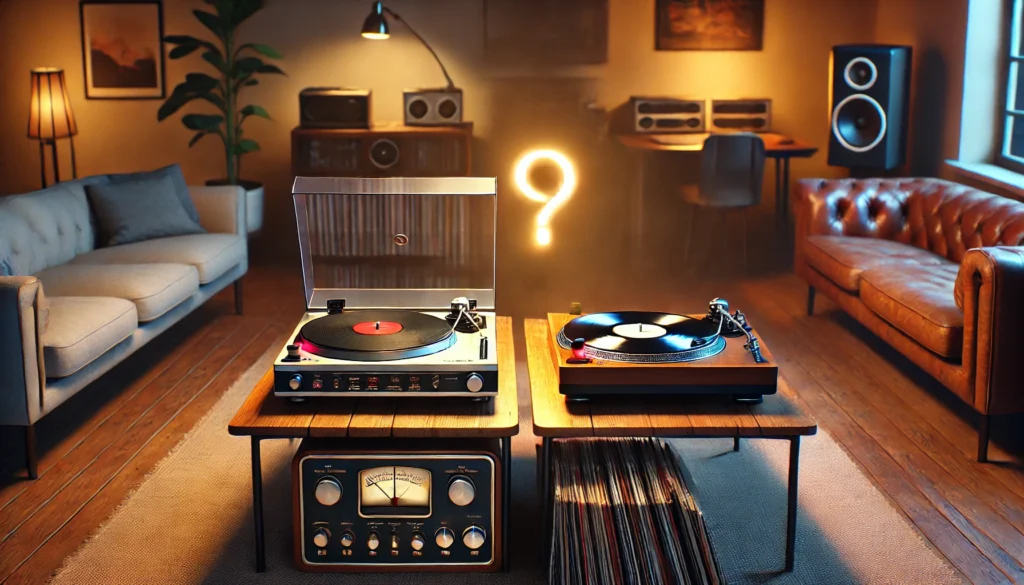
Alright, let’s talk money! The price range for turntables, both manual and automatic, can vary wildly.
You’ve got everything from budget options under $100 to high-end audiophile gear that costs more than my first car!
In general, at the entry-level, you’ll find that automatic turntables are often cheaper than manual ones. This is because they’re usually aimed at casual listeners who want the vinyl experience without breaking the bank.
You can find decent automatic turntables from reputable brands for around $150-$300.
Manual turntables at this price point are often a bit more expensive, usually starting around $200-$250 for a good quality unit. The reason for this is that even budget manual turntables often put more emphasis on sound quality and build, since they’re targeting a slightly more enthusiast crowd.
As you move up the price range, things start to even out a bit. In the $500-$1000 range, you’ll find excellent options for both manual and automatic turntables.
This is where you start seeing really good build quality, better cartridges, and noticeable improvements in sound.
At the high end of the market (we’re talking $1000+), manual turntables tend to dominate. This is the realm of the serious audiophile, where every tiny improvement in sound quality is pursued, often at significant cost.
That said, there are some seriously impressive (and seriously expensive) automatic turntables out there too.
Now, let’s talk value for money. This is where things get a bit subjective.
In my experience, if sound quality is your top priority and you’re willing to be more hands-on, manual turntables often provide better value for money. The lack of automatic mechanisms means more of your money is going towards the components that directly affect sound quality.
On the other hand, if convenience is a big factor for you, an automatic turntable might provide better value. The ability to just press a button and have your records play automatically is worth a lot to some people.
I remember when I was shopping for my first “serious” turntable. I was torn between a $600 manual turntable and a $500 automatic one.
I ended up going for the manual one, and while I sometimes miss the convenience of automatic operation, I’ve never regretted the decision. The sound quality and the feeling of connection with the music were worth it for me.
But here’s the thing – I’ve got friends who’ve gone the other way and been just as happy. One buddy of mine swears by his automatic turntable.
He says being able to flip a record while he’s in the middle of cooking dinner is priceless!
In terms of long-term value, manual turntables might have a slight edge. They’re often simpler mechanically, which means there’s less that can go wrong over time.
Plus, many manual turntables are designed to allow for upgrades (like better cartridges or tonearms), which can extend their lifespan and improve performance over time.
That said, a well-made automatic turntable can last for decades with proper care. My dad still uses the automatic turntable he bought in the ’80s, and it works perfectly!
Ultimately, the best value for money comes from choosing a turntable that fits your needs and will encourage you to listen to your records more often. Whether that’s a budget automatic model or a high-end manual turntable depends on you, your listening habits, and your budget.
Which One Should You Choose?
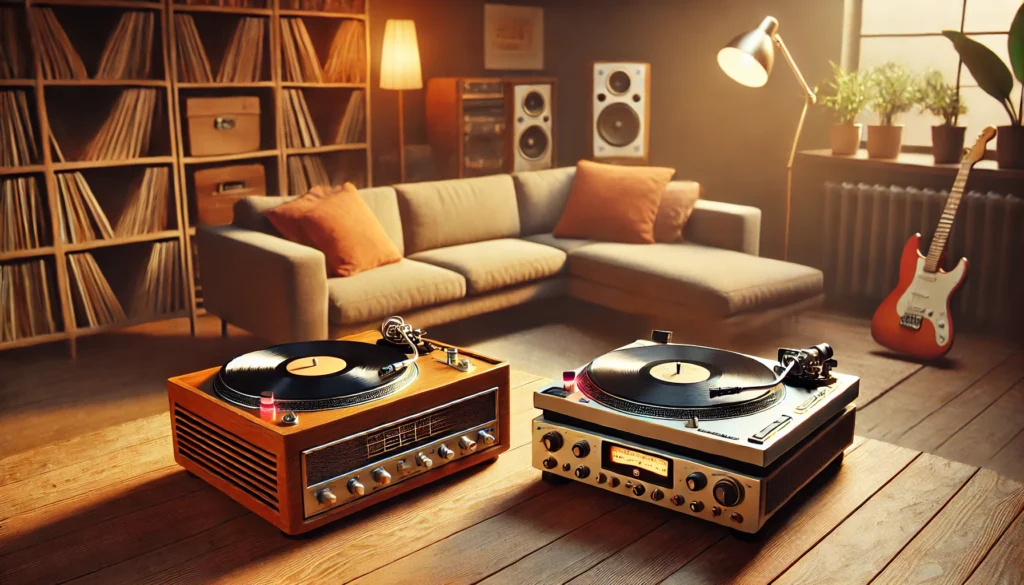
Alright, decision time! Choosing between a manual and an automatic turntable can feel like a big deal, especially if you’re new to the vinyl game.
But don’t sweat it – I’ve been through this dilemma myself, and I’m here to help you figure it out.
First things first, there’s no universally “right” choice. It all depends on your personal preferences, listening habits, and what you want to get out of your vinyl experience.
Let’s break it down:
Go for a manual turntable if:
- You’re all about that hands-on vinyl experience. If you love the ritual of playing records and don’t mind being more involved in the process, a manual turntable is your jam.
- Sound quality is your top priority. While both types can sound great, manual turntables often have a slight edge in the audiophile world.
- You’re into the idea of upgrading components over time. Manual turntables are often more modular and easier to upgrade.
- You don’t mind a bit of a learning curve. It takes some practice to use a manual turntable properly, but many find it rewarding.
Choose an automatic turntable if:
- Convenience is key for you. If you want to be able to put on a record and walk away, automatic is the way to go.
- You’re new to vinyl and want something more user-friendly to start with.
- You often listen to records while doing other things and can’t always be there to flip the record or lift the tonearm.
- You’re worried about potentially damaging your records. Automatic turntables can be more forgiving for beginners.
Now, here’s a pro tip: if you’re on the fence, consider a semi-automatic turntable. These bad boys give you the best of both worlds – you start the record manually (giving you that hands-on feel), but the tonearm lifts automatically at the end of the side.
It’s like the Switzerland of turntables – nicely neutral!
When I was helping my cousin choose her first turntable, we went through this whole process. She loved the idea of a manual turntable but was worried about falling asleep and leaving the needle running.
We ended up going with a semi-automatic model, and she couldn’t be happier!
If you have the chance, try to listen to both types before making a decision. Hit up your local hi-fi shop or see if any of your vinyl-head friends have different types you can check out.
There’s nothing like hands-on experience to help you decide.
And remember, at the end of the day, the best turntable is the one that gets you listening to your records more often. Whether that’s a high-end manual turntable or a budget-friendly automatic one doesn’t matter as much as the joy you get from spinning your favorite albums.
Conclusion
Whew! We’ve covered a lot of ground, haven’t we? From the nitty-gritty details of how manual and automatic turntables work, to sound quality face-offs and price comparisons, we’ve really dug into this topic.
Here’s the bottom line: both manual and automatic turntables have their place in the wonderful world of vinyl. Manual turntables offer a more engaged, hands-on experience and often edge out in terms of sound quality and upgrade potential.
Automatic turntables, on the other hand, bring convenience and user-friendliness to the table, making them great for casual listening or multitasking music lovers.
Your perfect choice depends on your personal preferences, listening habits, and how much involvement you want in the playback process. Whether you go manual or automatic, the most important thing is that you’re enjoying your music!
Remember, the vinyl community is all about sharing experiences and learning from each other. So, I’d love to hear from you!
What type of turntable do you use? Are you team manual or team automatic? Or maybe you’re rocking a semi-automatic setup?
Drop a comment below and share your turntable tales!
And hey, if you’re still feeling unsure, don’t hesitate to ask questions. We vinyl enthusiasts love nothing more than geeking out about our setups and helping fellow music lovers find their perfect match in the turntable world.
Now, if you’ll excuse me, I’ve got some records calling my name. Happy listening, folks!
